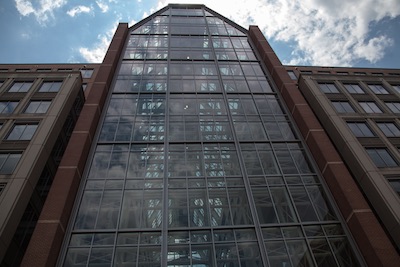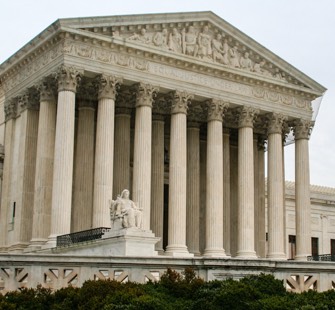Trump’s proposed budget would give PTO $3.6 billion for FY 2018
 Several weeks ago, President Donald J. Trump released his proposed FY 2018 budget under the title A New Foundation for American Greatness. A review of the budget and supporting Commerce Department Appendix suggests the United States Patent and Trademark Office (USPTO) has received everything it requested, and will not suffer fee diversion during the next fiscal year if the President’s FY 2018 budget passes Congress.
Several weeks ago, President Donald J. Trump released his proposed FY 2018 budget under the title A New Foundation for American Greatness. A review of the budget and supporting Commerce Department Appendix suggests the United States Patent and Trademark Office (USPTO) has received everything it requested, and will not suffer fee diversion during the next fiscal year if the President’s FY 2018 budget passes Congress.
The President’s Message on FY 2018 Budget
“This Budget’s defining ambition is to unleash the dreams of the American people,” President Trump wrote in the Budget Message of the President accompanying the release of the FY 2018 budget. “This requires laying a new foundation for American Greatness.”
SCOTUS takes IPR constitutionality challenge in Oil States
 To the surprise of many, the United States Supreme Court has granted certiorari in Oil States vs. Greene’s Energy Group, et al. From a substantive standpoint, this dispute is between the parties to an inter partes review (IPR) proceeding conducted by the Patent Trial and Appeal Board (PTAB). By taking this case, the Supreme Court will address the constitutionality of having an Article I tribunal extinguish patent rights under the post grant proceedings created by the America Invents Act (AIA).
To the surprise of many, the United States Supreme Court has granted certiorari in Oil States vs. Greene’s Energy Group, et al. From a substantive standpoint, this dispute is between the parties to an inter partes review (IPR) proceeding conducted by the Patent Trial and Appeal Board (PTAB). By taking this case, the Supreme Court will address the constitutionality of having an Article I tribunal extinguish patent rights under the post grant proceedings created by the America Invents Act (AIA).
The Supreme Court granted certiorari only on the first question presented: “Whether inter partes review – an adversarial process used by the Patent and Trademark Office (PTO) to analyze the validity of existing patents – violates the Constitution by extinguishing private property rights through a non-Article III forum without a jury.”
The grant of certiorari in this case is particularly noteworthy given that the United States was asked by the Supreme Court for its views and opined in its brief that the petition should be denied.
The argument that inter partes review is unconstitutional can be traced back all the way to 1898 when the Supreme Court issued its decision in McCormick Harvesting Mach. Co. v. Aultman & Co., 169 U.S. 606 (1898). In that case, the Supreme Court held that once a patent is granted, it “is not subject to be revoked or canceled by the president, or any other officer of the Government” because “[i]t has become the property of the patentee, and as such is entitled to the same legal protection as other property.”
The phrasing of the question taken by the Supreme Court could be quite telling. Over the last several years, 8 of the 9 Supreme Court Justices have signed on to an opinion that has recognized that a patent confers either an exclusive or valuable property right. Thus, it would hardly seem a stretch to suggest that the Court, or at least the required four Justices necessary to take a case, have some reason to suspect that the extinguishing of a exclusive, valuable property through a non-Article III forum without a jury violates the Constitution.
While many will undoubtedly have varied opinions as to the importance of this decision by the Court to take this case, the truth is that any decision by the Supreme Court in Oil States simply cannot make things any worse for patent owners. The PTO already considers patents to be a public right, and post grant challenges, particularly inter partes review and covered business method review, are killing patent claims at exceptionally high rates.
This case will be argued during the October 2017 term, with a decision by the end of June 2018. In the coming months there will be much more analysis as the party briefs and amici are filed. Stay tuned.
For instant industry reaction please see: Industry Reaction to SCOTUS Granting Cert. in Oil States.
06.22.17 | Inter Partes Review, Patent Issues, posts, Supreme Court Cases | Gene Quinn
Laches no defense to patent infringement during statute of limitations
 The United States Supreme Court recently issued its decision in SCA Hygiene Products Aktiebolag et al. v. First Quality Baby Products, LLC, et al. The issue before the Supreme Court was whether the defense of laches remained a viable defense to patent infringement actions brought during the exceptionally long six-year statute of limitations. The Supreme Court ruled that the defense of laches is inappropriate for claims brought within the statute of limitations, hardly a shocking ruling given that the Court reached the same ruling only several years ago with respect to laches as a defense in copyright infringement claims. See Petrella v. Metro-Goldwyn-Mayer, Inc., 572 U.S. ___ (2014).
The United States Supreme Court recently issued its decision in SCA Hygiene Products Aktiebolag et al. v. First Quality Baby Products, LLC, et al. The issue before the Supreme Court was whether the defense of laches remained a viable defense to patent infringement actions brought during the exceptionally long six-year statute of limitations. The Supreme Court ruled that the defense of laches is inappropriate for claims brought within the statute of limitations, hardly a shocking ruling given that the Court reached the same ruling only several years ago with respect to laches as a defense in copyright infringement claims. See Petrella v. Metro-Goldwyn-Mayer, Inc., 572 U.S. ___ (2014).
Unlike most patent decisions, the decision in SCA Hygiene Products was not unanimous. The majority opinion was delivered by Justice Alito, who was joined by the Chief Justice, as well as Justices Kennedy, Thomas, Ginsburg, Sotomayor, and Kagan. A dissent was filed by Justice Breyer, who would have affirmed the Federal Circuit ruling finding that 35 U.S.C. 282 codified a laches defense without using the term “laches.” It was Justice Breyer’s belief that the codified defense of unenforceability allowed for a laches defense to patent infringement actions, explaining that in very old cases interpreting the common law, laches was at times equated to unenforceability.
04.26.17 | Patent Issues, Patent Litigation, posts, Supreme Court Cases | Gene Quinn
On the Record with Russ Slifer
 Russ Slifer is the former Deputy Under Secretary of Commerce for Intellectual Property and Deputy Director of the United States Patent and Trademark Office (USPTO). Slifer resigned from this position he held for nearly two years on Friday, January 20, 2017.
Russ Slifer is the former Deputy Under Secretary of Commerce for Intellectual Property and Deputy Director of the United States Patent and Trademark Office (USPTO). Slifer resigned from this position he held for nearly two years on Friday, January 20, 2017.
During his time at the Patent Office, I tried to get an interview with Slifer on a variety of occasions, but those efforts all went for naught. Upon his resignation, Silfer agreed to an interview, which took place via telephone on Monday, March 20, 2017. The entire 3-part interview transcript is available on IPWatchdog.com. What follows are the highlights.
Slifer on the mechnics and timing of resigning from a political appointment:
SLIFER: Each department in the Executive branch, let’s say the Department of Commerce has a White House liaison that interfaces between the political appointees that are under the Department of Commerce and the White House regarding employment issues. So when we’re approaching the end of an administration, they’re working with us on the transition out. They provided us a letter that came from the White House, let’s see, I think it was probably in December, maybe early December, that outlined that the President wanted all of our letters of resignation on file by a certain date and our intended date of departure. We were instructed that our resignation would be no later than noon on January 20th. So we basically got an instruction from the White House that they wanted everybody’s resignation letter and what it would say in it.
04.25.17 | Inter Partes Review, Patent Issues, posts, USPTO | Gene Quinn
Federal Circuit rejects Google’s petition for rehearing
On April 4, 2017, the United States Court of Appeals for the Federal Circuit issued a brief order denying panel rehearing and denying rehearing en banc in Unwired Planet, LLC v. Google, Inc.
Google filed a petition for both panel rehearing and rehearing en banc. A response to the petition was invited by the court and filed by Unwired Planet, LLC. No reason for the denial of Google’s petition was provided by the Federal Circuit, which is typical. The original panel decision, authored by Judge Reyna and issued on November 21, 2016, found that the Patent Trial and Appeal Board (PTAB) was using the wrong definition for what constitutes a covered business method (CBM) patent.
A covered business method patent is defined as a patent that claims a method for performing data processing or other operations used in the practice, administration, or management of a financial product or service. Specifically excluded from the definition of a covered business method patents are those that relate to technological inventions. See 37 C.F.R. 42.301(a). To determine whether a patent is for a technological invention, the PTAB is supposed to consider whether the claimed subject matter recites a technological feature that is novel and unobvious over the prior art, and solves a technical problem using a technical solution. See 37 C.F.R. 42.301(b). Nevertheless, the PTAB had been finding patents to be CBM patents when they covered matter incidental to a financial activity or complementary to a financial activity. For more see Federal Circuit slams PTAB.
04.24.17 | CAFC, Patent Issues, posts, USPTO | Gene Quinn


No Comments
06.27.17 | Patent Issues, posts, USPTO | Gene Quinn